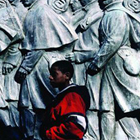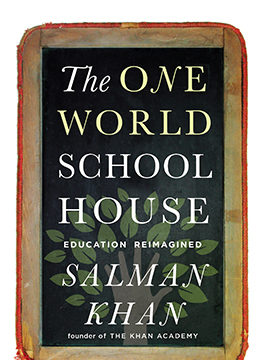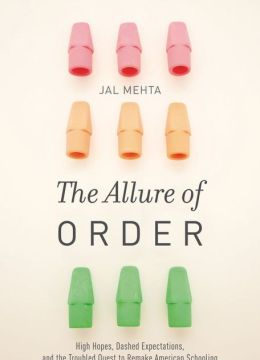 The Immigrant Advantage: What We Can Learn from Newcomers to America about Health, Happiness, and Hope
The Immigrant Advantage: What We Can Learn from Newcomers to America about Health, Happiness, and Hope
By Claudia Kolker
The Free Press, 2011, $26.00, 239 pages.
Reviewed by Nathan Glazer
“The Immigration Spring” reads the title of the lead editorial in the New York Times today as I write this review of The Immigrant Advantage. The Times is welcoming a rare case of cooperation between Republicans and Democrats in addressing the issues of 11 million undocumented immigrants and ineffective and inefficient immigration policies, which may lead to a legislative proposal by the time this review is published. Claudia Kolker, a journalist who lives in Houston—for years with the Houston Chronicle, the child of an immigrant Mexican mother and a father one generation away from Eastern European immigrant parents—has written a wonderfully lively account of how new immigrant groups, still attached to some of the customs and institutions of their former lives, can tell us a great deal about what is absent, to our disadvantage, in our typical American lives.
In her exploration of Vietnamese, Mexican, Korean, Jamaican, South Asian, and African immigrant communities, the author hops around the country, using the skills of the investigative reporter and her own remarkable capacity for social engagement, to enter the lives of these groups, and to enable readers to enter into their lives, too. As is the case with the better reporters’ books these days, all this is backed with solid, unobtrusive back-of-the-book notes on the best current academic research on immigrants.
“The immigrant advantage”? When we hear so much about their disadvantages, at work, in school, in life? But note the “epidemiological paradox” reported in an academic study of 1986, and backed by many others: “Latinos in the Southwest lived as long as non-Hispanic whites. Later studies showed Latinos live longer—especially immigrants. The findings were baffling, because Latinos are burdened with all kinds of health risks: less education, lower income, more obesity than native-born whites.… In 2010, the Centers for Disease Control reported that Latinos, about half of whom are foreign-born, now live two and a half years longer than non-Hispanic whites.” And Latinos are our least-advantaged major immigrant group; of course we would expect East Asians and South Asians to do better on various measures, as they do markedly on education, and they do.
Kolker begins her exploration with “How to Save,” in which she tells us about Vietnamese money clubs, or hui (there are equivalents in other immigrant groups), in which a group of people agree, each month, to contribute to a common fund. “Every month, cash in hand, members meet to contribute their dues. And each month a different player takes that lump sum home, interest-free.” The sum is often substantial. It may help to buy a house or repair one, or to start a new business or expand an old one. The money club is of course based on a degree of trust among a group of acquaintances, though not necessarily close friends, that would be hard to come by in our typical American lives, and will be hard to maintain, one thinks, as Americanization proceeds. There have been other accounts of this kind of institution: it may contribute to the higher degree of self-employment and business creation among immigrants, a necessity for a group with less-than-adequate English, less equipped to seek effectively for jobs with established business. But trust and close community are essential.
These qualities are essential as well for the institution described in “How to Mother a Mother,” on the Mexican custom of cuarantena, the six weeks after birth, when a new mother is expected to be at home at ease, taken care of by her relatives, her friends. And of course this does depend on having close relatives to cook and bring food and run errands, and close friends in a community in which people see each other often, expect reciprocation of favors, or simply assume others will be there when one needs help.
In “How to Be a Good Neighbor,” Kolker is in Chicago’s Little Village neighborhood, solidly Latino, where, an influential study in the American Journal of Public Health reports “asthma diagnoses at less than one-third the average in either Chicago’s white or black neighborhoods. Rich or poor. And Little Village, overwhelmingly, is poor.”
This is indeed a mystery. There may be a genetic factor. There may be a component of migration selection. Stress seems to play a part. Increasingly, a “neighborhood effect” on health is being explored. A study of Chicago neighborhoods asks if people in the area get together outside, visit each other, ask advice of neighbors, do favors for them. Against asthma rates of 19 percent among whites, 22 percent among blacks, and 15 percent among U.S.-born Latinos, it is only 5 percent in the city’s “main Mexican enclaves—little Village is one….” She adds, “We can’t sprout Mexican DNA or re-create a childhood on a Guerrero ranch…. But most of us can copy fairly easily the ways Little Villagers use ordinary stoops, shops, and sidewalks to re-create elements of a Mexican neighborhood. In the process we may buffer ourselves from a signature American disease.” This does sound too easy: reproducing a classic Jane Jacobs neighborhood, with eyes on the street from numerous neighbors and shopkeepers, ready to discipline obstreperous children at play or stare away strangers, is not simple, though Kolker, inspired by her research, does try to spend more time out on her porch, greeting neighbors, checking on what’s going on.
And schooling? All this, and so much else I have not mentioned, must have an effect on “How to Learn,” a chapter in which Kolker describes the afterschool Korean hagwon. There are equivalents among the Chinese, the Vietnamese, and others, and it is no coincidence that the Khan Academy was created by an entrepreneur and educator whose parents came from South Asia. The children required to attend a school after school feel put upon when they look upon their carefree American schoolmates. Yet something there—along with other things of course, such as parent involvement and children’s feeling of obligation to hard-working parents—contributes to the common pattern of immigrant children doing better than their native-born classmates.
“Is Becoming American a Developmental Risk?” is the title of a Brown University symposium referred to by Kolker in her conclusions. “The good habits many immigrants bring with them…are not rocket science…. But even though these traditions promote values we Americans treasure—entrepreneurship, maternal health, social bonds [and high school achievement]—they tend to fall away after a generation or two of exposure to U.S. life….”
“A paradox indeed,” as Kolker writes. In the end, she directs our attention to our American society, the strains that are changing it, the shift in its values, the distance from onetime practices and habits, and the sustainability of the culture we have shaped.
Nathan Glazer is professor emeritus of education and sociology at Harvard University.
This article appeared in the Fall 2013 issue of Education Next. Suggested citation format:
Glazer, N. (2013). Cultural Exchange: Learning from those who came after. Education Next, 13(4), 74-75.





